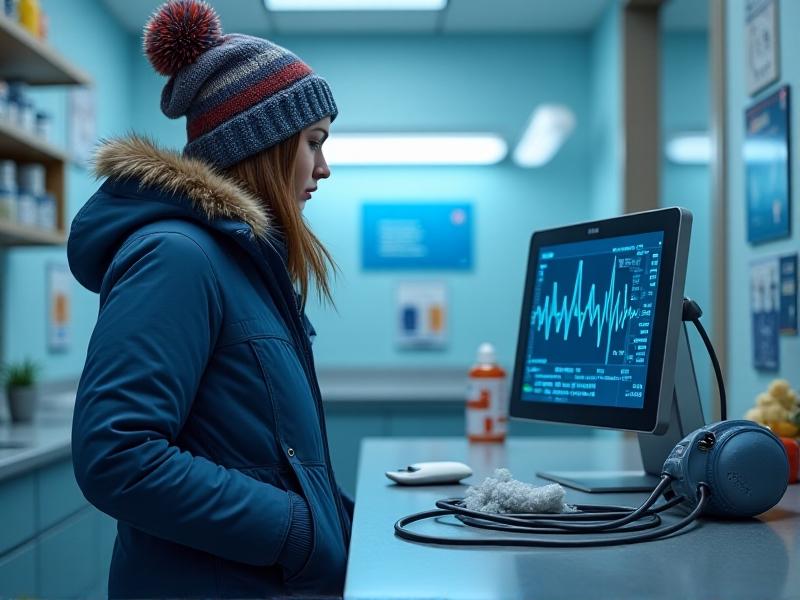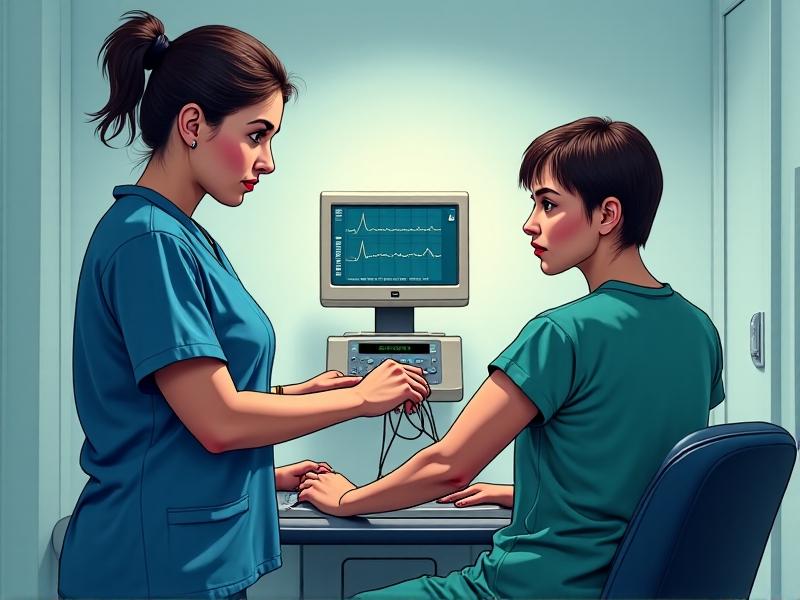Cardiac Screening Protocols Before Cold Exposure
The Importance of Cardiac Screening in Cold Exposure Preparation
Cold exposure, whether for therapeutic, athletic, or occupational purposes, places significant stress on the cardiovascular system. Sudden drops in temperature can trigger vasoconstriction, increased blood pressure, and arrhythmias, particularly in individuals with undiagnosed cardiac conditions. Screening protocols are essential to identify at-risk individuals and prevent adverse events such as myocardial infarction or sudden cardiac arrest. For example, asymptomatic individuals with congenital heart defects or atherosclerosis may unknowingly face life-threatening risks during cold immersion. A thorough cardiac evaluation helps clinicians tailor safety measures, recommend exposure limits, or exclude high-risk participants entirely.

Key Components of Pre-Cold Exposure Cardiac Assessments
A comprehensive cardiac screening protocol begins with a detailed medical history to identify prior cardiovascular events, familial risks, or symptoms like chest pain or syncope. Physical examinations focus on blood pressure variability, heart murmurs, and peripheral circulation. Diagnostic tools such as electrocardiograms (ECGs) are critical for detecting arrhythmias or ischemic changes, while stress tests evaluate cardiac performance under simulated cold-induced physiological strain. Advanced screenings, including echocardiograms or coronary calcium scans, may be warranted for high-risk groups. These components collectively create a risk profile that informs individualized cold exposure guidelines.

Understanding the Risks: How Cold Affects Cardiovascular Health
Cold environments activate the sympathetic nervous system, causing blood vessels to constrict and heart rate to rise. This response increases myocardial oxygen demand, which can exacerbate underlying coronary artery disease. Hypothermia further disrupts electrolyte balance, heightening the risk of ventricular fibrillation. Studies show that cold-related cardiac events peak during the first minutes of exposure, underscoring the need for preemptive screening. Populations in extreme occupations—like ice rescue teams or polar researchers—face cumulative risks, making baseline and periodic cardiac evaluations vital for long-term safety.

Common Diagnostic Tools and Tests Used in Screening
Resting ECGs are the cornerstone of cardiac screening, capturing electrical activity to identify arrhythmias or conduction abnormalities. Stress testing, often combined with cold pressor tests, simulates the hemodynamic effects of cold exposure by immersing a limb in ice water while monitoring heart response. Blood tests measuring troponin levels or lipid profiles help detect recent ischemia or hypercholesterolemia. For nuanced cases, imaging modalities like cardiac MRI provide detailed views of myocardial structure and function. Wearable devices, such as ambulatory Holter monitors, offer real-world data on heart rhythm fluctuations during preliminary cold acclimatization trials.

Interpreting Results: When to Proceed or Pause Exposure
Screening outcomes are evaluated against established risk thresholds. Abnormal ECG findings—such as ST-segment depression or prolonged QT intervals—warrant further investigation. Elevated blood pressure during cold pressor tests may indicate excessive sympathetic reactivity. Asymptomatic individuals with minor irregularities might proceed with precautions like graded exposure and continuous monitoring. However, those with significant coronary blockages, unresolved arrhythmias, or prior cardiac events are typically advised to avoid prolonged cold exposure. Collaborative decision-making between patients, cardiologists, and occupational health specialists ensures balanced risk mitigation.
Tailoring Protocols for High-Risk Populations
Athletes, elderly individuals, and those with diabetes or hypertension require customized screening approaches. For instance, masters athletes may need rigorous stress testing to detect silent ischemia, while diabetics benefit from ankle-brachial index assessments to evaluate peripheral artery disease. Pediatric populations undergoing cold therapy for autoimmune conditions require age-adjusted ECG interpretations. In occupational settings, serial screenings every 6–12 months help track cardiovascular changes over time. Personalized protocols not only enhance safety but also empower participants with data-driven insights into their health.
Case Studies: Real-World Applications and Outcomes
A 2022 study of winter marathon runners revealed that 8% of asymptomatic participants had abnormal ECGs, prompting disqualification for five individuals with severe arrhythmias. In another case, a polar expedition team member with borderline hypertension underwent successful beta-blocker titration before deployment, preventing a potential crisis. Conversely, a lack of screening in an outdoor therapy group led to a near-fatal cardiac event in a participant with undiagnosed hypertrophic cardiomyopathy. These examples highlight the tangible benefits—and consequences—of rigorous cardiac screening.
Limitations and Future Directions in Cardiac Screening
Current protocols have gaps: false negatives in stress testing or limited access to advanced imaging in rural areas. Emerging technologies like AI-driven ECG analysis and portable ultrasound devices promise greater accuracy and accessibility. Biomarkers such as endothelial function tests may soon refine risk stratification. Longitudinal studies tracking cold workers over decades could establish clearer thresholds for safe exposure. Ultimately, evolving science and technology will shape more nuanced, equitable screening frameworks—balancing safety with the growing popularity of cold-based therapies.








